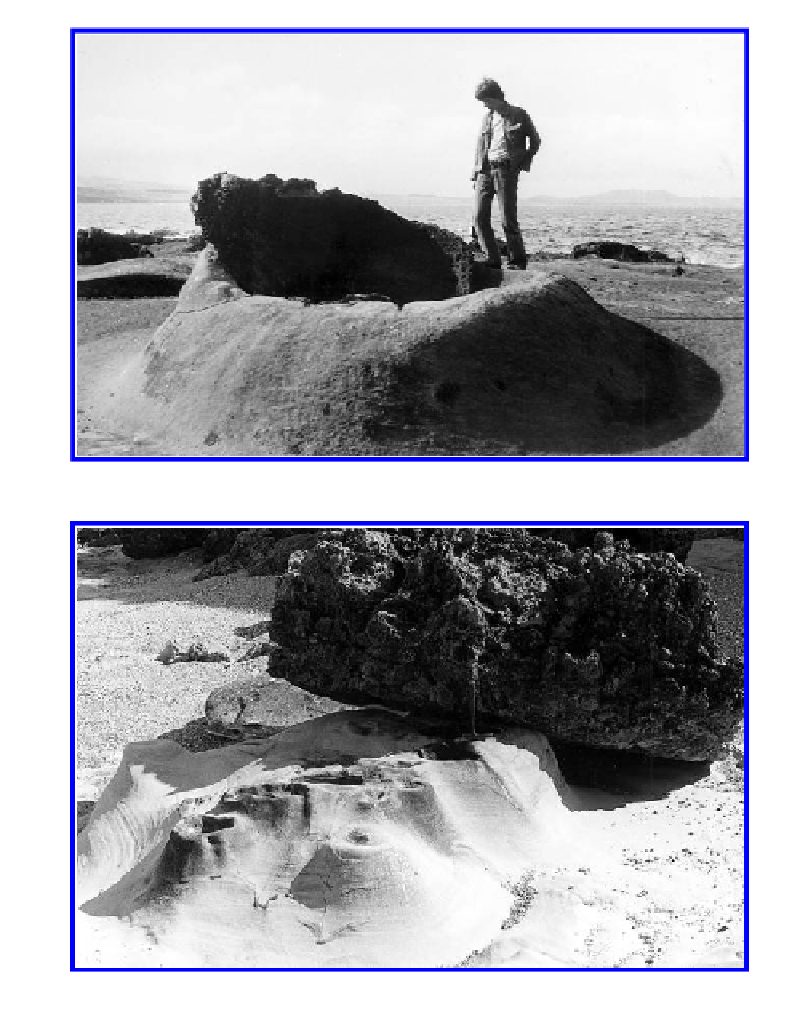Geology Reference
In-Depth Information
(d)
Figure 12.20.
(d) Conical font in sandstone, Shag Point, Moeraki, South Island, New Zealand.
(a)
Figure 12.21.
(a) Sandstone plinth with calcarenite block, Talia, west coast of Eyre Peninsula, South Australia.
to chemical attack of standing water. At most sites, only granite sand is available, and in any case
only on lower slopes is runoff of sufficient velocity and volume to set the sand in motion and use
it as an abrasive tool. Only in river and subglacial stream beds, and adjacent to marine cliffs, where
breaking waves induce turbulence and grinding action, has pot-holing contributed significantly to
the development of basins in granite bedrock, and many of these are more closely allied to the
cylindrical hollows described in Chapter 9. Some forms are comparable to terrestrial counterparts,
but are especially well and widely developed because of the oceanic or coastal environment. Thus,
the abundance of alveoles (developed in sandstone (Fig. 12.21b), mudstone and amphibolite as
well as granite) and tafoni reflect the ready availability of salt, which, especially in dry or season-
ally dry climates, can precipitate out and shatter rocks.


